![]()
- End of Season BBQ
- 2019 Active Divers Tahiti Land Based Dive Trip
- Digital Underwater Imaging Tips
- Coral Restoration Foundation Is Branching-Out to Boulder Coral
- Miami Now Nation's Top Importer of Shark Fins
- Are Sharks Important
- Beach Sands
- What is the Future For Sharks?
- Avoid These Coral-Killing Sunscreens
- Beer, Drinking Water And Fish: Tiny Plastic Is Everywhere
- Newsletter Delivery Options
- Email or Address Change?
- T-Shirts For Sale
- Active Divers Guidelines & Policies
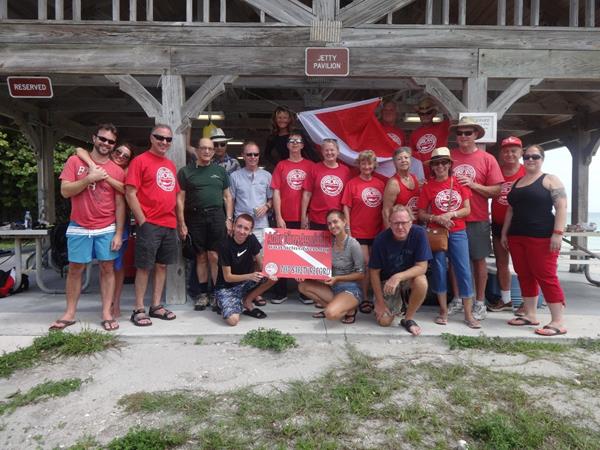
When: Saturday, October 6, 2018
Who: Active Divers members, family and friends. The cost of the BBQ for non Active Divers members is $10.00.
Where: Dr. Von D. Mizell-Eula Johnson State Park (formerly known as John U. Lloyd Beach State Park), Jetty Pavilion, 6503 N. Ocean Drive, Dania Beach, Florida 33004. 1.5 miles north of Sheridan St. on A1A. It dead ends into the park. Signs are posted with directions.
Time: Park opens at 8:00 AM. Meet for beach dive at 9:00 AM, BBQ at noon.
MUST BE PRESENT TO WIN RAFFLE PRIZES. MUST RSVP TO WIN PRIZES.
Bring Your Dive gear for Sale or Swap!!
Call or email Lon at 305-251-4975 or lon@diverlon.com to sign up, deadline October 3 RSVP.
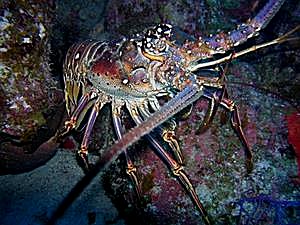 For beach diving, bring all your own gear and a dive
flag if you have one. The ledge is about 100 yards off shore. It’s a
great surface swim out. That is your warning. Or dive in close and
enjoy the reef (rocks, seaweed and telecommunication cables). The
pavilion has covered shelter, nice bathrooms, showers, and changing
room. We will have the BBQ and raffle, rain or shine. If there is a
hurricane it may be cancelled. But maybe not because that is when the
lobsters are walking. BBQ will include lobsters (if you catch any),
burgers, dogs, chicken, extras and all drinks. A small fee is charged
to enter the park ($4 for single occupancy vehicles, $6 for 2-8
persons per vehicle), parking at the pavilion. Non-Active Divers
members and non-family members may attend, but there will be a cost of
$10.00 for non- Active Divers persons. They may also dive, but are not
part of the Active Divers dive group and not eligible for prizes.
For beach diving, bring all your own gear and a dive
flag if you have one. The ledge is about 100 yards off shore. It’s a
great surface swim out. That is your warning. Or dive in close and
enjoy the reef (rocks, seaweed and telecommunication cables). The
pavilion has covered shelter, nice bathrooms, showers, and changing
room. We will have the BBQ and raffle, rain or shine. If there is a
hurricane it may be cancelled. But maybe not because that is when the
lobsters are walking. BBQ will include lobsters (if you catch any),
burgers, dogs, chicken, extras and all drinks. A small fee is charged
to enter the park ($4 for single occupancy vehicles, $6 for 2-8
persons per vehicle), parking at the pavilion. Non-Active Divers
members and non-family members may attend, but there will be a cost of
$10.00 for non- Active Divers persons. They may also dive, but are not
part of the Active Divers dive group and not eligible for prizes.
![]()
We now have 7 cabins booked on the Paul Gauguin cruise on June 1 through June 8, 2019. Water sports, including scuba diving (booked separately) are available on the cruise as it stops in ports in the Society Islands and Tahiti Iti. The cruise and pre-cruise optional 3-night trip to Moorea (recommended) can be taken separately, or combined with the post-cruise dive trip. The post-cruise dive trip can be taken without booking the cruise, so there are a lot of options to think about. It’s an 8 hour flight from Los Angeles to Tahiti, so if you are going to go that far, you should get as much out of it as you can!! At this time, I have only been able to secure rates for the cruise but not the land portions.
For those interested in the post-cruise land-based trip only, this is the schedule that has been developed so far (all dates are in 2019):
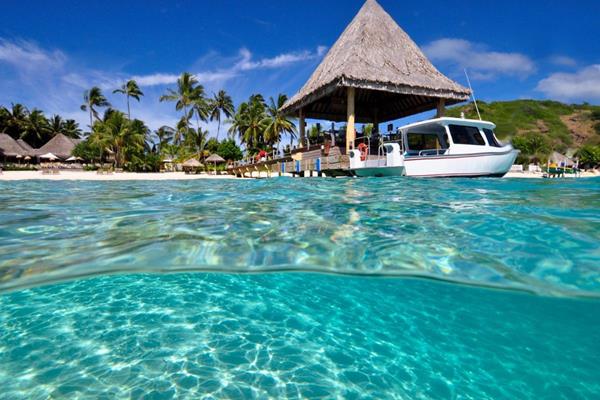
- 08-Jun Arrive Papeete
- 09-Jun Bora Bora
- 10-Jun Bora Bora-Dive Day
- 11-Jun Bora Bora-Dive Day
- 12-Jun Bora Bora-Dive Day
- 13-Jun Rangiroa
- 14-Jun Rangiroa-Dive Day
- 15-Jun Rangiroa-Dive Day
- 16-Jun Rangiroa-Dive Day
- 17-Jun Depart For Papeete
I am expecting the package to include hotels from June 8 to June 16th, some meals, inter-island flights to Bora Bora and Rangiroa, and two dives per dive day. International flights to Tahiti (Papeete) from the US are NOT included. You can always add on days on your own after we return to Papeete, and there may be an opportunity to do a shark dive or whale watching expedition.
We will be staying at Intercontinental Hotels in all of the locations, so I am awaiting the signed contracts which give us multiple island discounts, as well as some different inter-island flight discounts before being able to quote any firm prices. So stand by, and more information will be available soon!
![]()
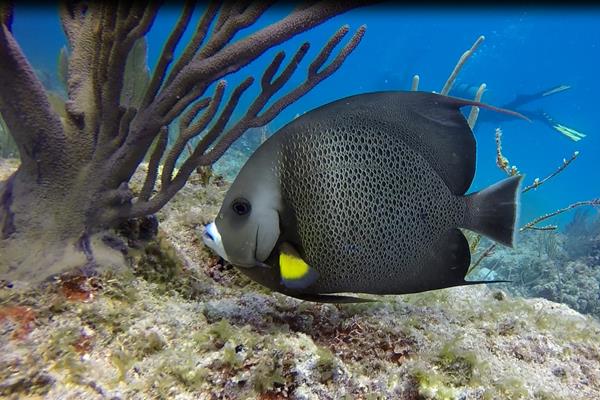 For years I
watched underwater photographers struggle with giant, expensive
cameras that were unwieldy and difficult to manage. I shied away from
underwater photography for the majority of my diving career, thinking
it would detract from the Zen of diving. Fortunately technology has
caught up. Thanks to the GoPro and other compact underwater cameras,
divers now have the power of yesteryear's behemoth cameras in the palm
of their hand, at a fraction of the cost. Today I tell my students to
never leave your GoPro in the rinse bucket on the dive boat because on
any given dive there may be a half dozen in there and most look alike.
Give it a quick rinse, dry it off and store it safely in your dry bag.
For years I
watched underwater photographers struggle with giant, expensive
cameras that were unwieldy and difficult to manage. I shied away from
underwater photography for the majority of my diving career, thinking
it would detract from the Zen of diving. Fortunately technology has
caught up. Thanks to the GoPro and other compact underwater cameras,
divers now have the power of yesteryear's behemoth cameras in the palm
of their hand, at a fraction of the cost. Today I tell my students to
never leave your GoPro in the rinse bucket on the dive boat because on
any given dive there may be a half dozen in there and most look alike.
Give it a quick rinse, dry it off and store it safely in your dry bag.
The investment today is minimal to take really great underwater photos. GoPro is the brand standard, however, there are less expensive knock-offs available on Amazon that also produce great results. Regardless of what you start with, a filter system is critically important. I admired Roger Smalling's photos and he recommended to me the Backscatter 3 Filter Kit Underwater Color-Correction system which allows you to easily change filters as you change depths. This kit has served me very well.
Body position, camera handling and proximity to the subject also
play an important role. These cameras have no manual adjustments, so
the best shooting position on any subject is from below the subject
with the camera angle titled slightly upward toward the surface. The
camera must be held very steady, though the burst mode assists with
this by providing several shots in rapid succession with a single push
of the button. It is imperative to get very close to the subject, due
to these cameras having a very wide angle lens. Another must for
photos is
Vivid-Pix color correction software which finishes the job of
the filter system and gives the photos a professional, polished look.
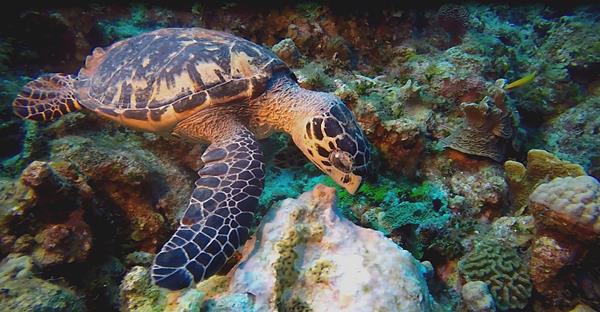
After three years of shooting only photos, this year I started experimenting with video with great results. Now I take exclusively video because the best stills can be lifted straight from video, and the continuous recording seems to alleviate many of the problems such as blurriness inherent in taking stills.
The best videos are also taken below the subject, with the camera titled slightly upward. The camera should be held as steady as possible with pans very slow and steady, so you don't make your viewer seasick. When shooting a school of fish, make sure you pan in the direction that the fish are swimming. One advantage of the GoPro stick handle is that you can turn on the video, stick it into a hole and get very close to the subject for dramatic close-up footage.
Everyone knows the natural soundtrack of underwater video. There is a great free video editor called Open Shot that allows you to separate out the bubbly audio track and replace it with free audio tracks in a variety of genres from You Tube audio library and other free sources. Open Shot exports the compiled videos into the friendly .mp4 format which can be easily uploaded to Facebook or YouTube.
With equipment and tools once only available to professionals at a hefty price, today's technology affords the average diver the ability to create and share great professional-quality photos and videos with a minimal investment.
![]()
--by Roy D. Wasson
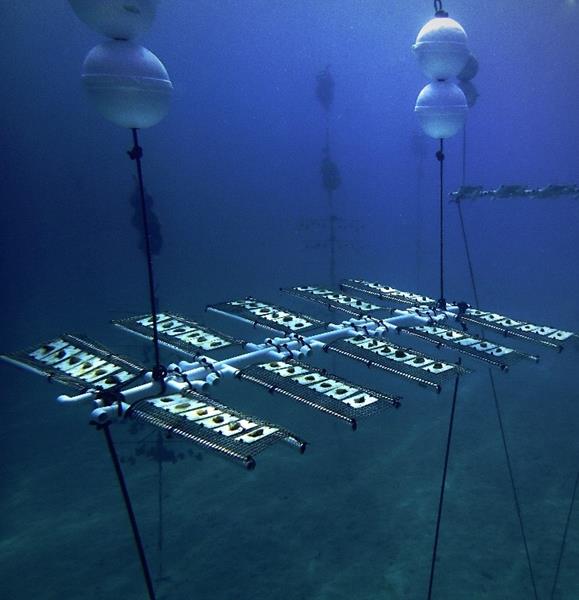 Now CRF is “branching out” (pardon the pun) to start
growing some non-branching corals in its genetic bank: Orbicella
faveolata (mountainous star coral) and Orbicella annularis (boulder
star coral)! Both of these species used to be abundant on the Florida
Reef Tract, but are now listed as threatened on the Endangered Species
Act list and endangered on the International Union for Conservation of
Nature’s (“IUCN”) Red List. This new incorporation into CRF’s gene
bank section is in addition to its already-established boulder coral
production area which will soon be using for out-planting; a first for
CRF.
Now CRF is “branching out” (pardon the pun) to start
growing some non-branching corals in its genetic bank: Orbicella
faveolata (mountainous star coral) and Orbicella annularis (boulder
star coral)! Both of these species used to be abundant on the Florida
Reef Tract, but are now listed as threatened on the Endangered Species
Act list and endangered on the International Union for Conservation of
Nature’s (“IUCN”) Red List. This new incorporation into CRF’s gene
bank section is in addition to its already-established boulder coral
production area which will soon be using for out-planting; a first for
CRF.
CRF’s genetic bank is a repository of genetic information which allows it to preserve diversity in an organized and controlled fashion. This is important because genetically diverse ecosystems are more resilient when confronted with disturbances such as disease or hurricanes.
The genetic bank currently holds six samples of each genotype in the nursery for staghorn and elkhorn corals. The goal of this endeavor is to do the same with these two species of star corals. CRF now has 36 genotypes of both O. faveolata and O. annularis in the nursery, and are in the works of moving six samples of each one of these into the gene bank.
These corals have a very different morphology from the Acroporids that CRF has previously focused on. As a result, they have had to develop different techniques for growing them. CRF’s Restoration Program Associates, Dan Burdeno and Tommy Paige, are the minds behind this new boulder Coral Tree™ design (shown here). They developed these trees using materials that Coral Restoration Foundation™ already utilizes on a regular basis.
While most of CRF's nursery trees sit vertically in the water column, the boulder Coral Trees™ are suspended horizontally. This allows divers to place 60 to 120 cards, each holding a small boulder coral fragment, along the tree's 10 branches. This design allows for easy cleaning and maintenance, and provides ample sun exposure, which is essential for these corals to grow. In addition, teams will be able to scientifically record and track growth rates via image analysis.
As you might have heard in the news, the Florida Reef Tract is currently being hit by a devastating disease outbreak, which is primarily affecting massive corals. This event is rapidly impacting boulder and star coral diversity out on the natural reef. By housing these 36 genotypes of O. annularis and O. faveolata in CRF’s healthy and isolated coral nurseries, we can ensure that even if specific genotypes are lost in the wild, we will still have a chance at reintroducing them to their native range in the future. Given this disease outbreak and the variety of stressors on the Florida Reef Tract, it is more important than ever for Coral Restoration Foundation™ to investigate the restoration of these other critical corals.
Stay tuned for future opportunities to join Active Divers Association’s programs with CRF. Check them out at www.coralrestoration.org
![]()
Miami is now nation's top importer of shark fins, likely caused by an increasing number of import bans in other states including California, New York and ten other states.
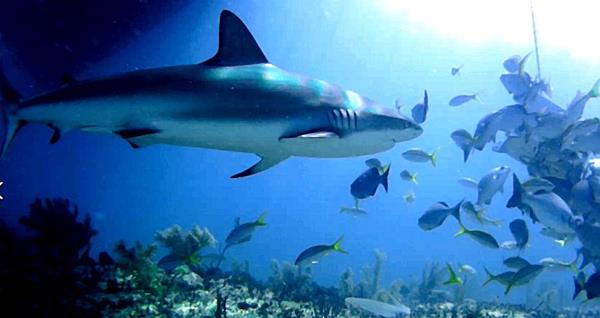
Oceana is pushing for a federal ban on shark fins, arguing that the U.S. should lead by example in a global trade blamed for killing 73 million sharks annually and driving down shark populations. The practice of slicing shark fins off at sea is outlawed in the U.S., but shark fins can still be legally harvested from sharks brought onshore or imported from countries without finning bans. A recent FIU study examined 4,800 fins purchased at the Hong Kong market, and found nearly a third came from protected sharks facing extinction.
Two proposed laws now winding through Congress would tighten restrictions. The fin trade remains the biggest fishing threat to sharks and the force behind shark fishing because of the strong demand for shark fins worldwide.
The fin market originated centuries ago in Asia, where shark fin soup was created for Chinese aristocracy. Fins continue to be used in traditional medicine and viewed as a sign of privilege in Asia. However, few Florida restaurants offer shark fin soup on their menus, but some high-end restaurants provide it, if requested.
The U.S and about 30 other countries ban finning in part or altogether, but some Asian countries still allow it and international waters remain unregulated. Enforcement remains a problem because you can't tell the ones sustainably caught from the ones horrifically finned. While the new laws may be difficult to enforce, it's a step in the right direction.
![]()
Healthy oceans require many things. One of them is sharks. Earth is largely a water world and keeping it in balance is important. The strange fact is that 99% of the earth’s biosphere, the place where life can exist, is water.
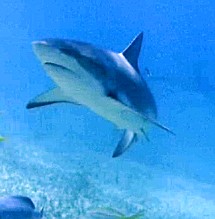 Governments talk about institutions too big
to fail. Well, the oceans are one of those entities for our planet
that are too big to fail!. Part of that equation is sharks. They
have existed for approximately 450 million years. That’s about 100
times more than man. Since 100 million sharks are killed annually
(yes, you read that correctly) it probably has an effect on the
ocean.
Governments talk about institutions too big
to fail. Well, the oceans are one of those entities for our planet
that are too big to fail!. Part of that equation is sharks. They
have existed for approximately 450 million years. That’s about 100
times more than man. Since 100 million sharks are killed annually
(yes, you read that correctly) it probably has an effect on the
ocean.
One important step is to have areas that are protected from any fishing. It is estimated that this would have to be a minimum of 30% of the oceans. This could result is a healthy ocean. Doesn’t seem like it is unrealistic.
The problem with sharks is take they a long time to reach reproductive age, as much as 10 to 20 years. Since everything is interdependent, will the sharks make it or will we create another catastrophe?
I realize sharks have a bad name but to me they are majestic creatures. My hope is that we will make them too big to fail.
![]()
We all have heard the adage about certain banks being too big to
fail, but does that apply to sharks too, are sharks too big to fail?
I’m talking about the ones in the water, not those in the legal
profession, with apologies to Roy, David, and Jeff, and all the
other lawyers in Active Divers. You know I love you guys. 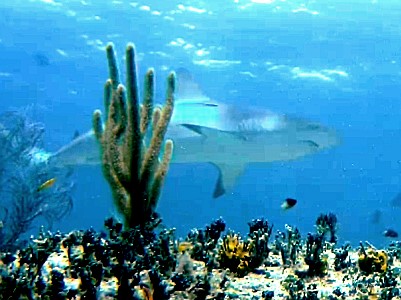
If the oceans are to survive, the sharks must as well, because they play a critical role in the undersea ecosystem. We all are aware of how certain animals released into or hunted out of an ecosystem being ruined forever. Just think wolves and rabbits, which are prime examples of this happening. Eradicating wolves caused a massive increase in the rabbit population, to the detriment of the agriculture industry. In a similar way, sharks provide a valuable service to the ocean ecosystem, keeping populations in balance. Sharks have survived five previous mass extinctions. Man wasn’t even around.
It is probably true that sharks don’t enjoy the warmth of a bunny rabbit, but never-the-less they are important. Every animal plays a vital role in the ecosystem and, despite their ferocious appearance or looks, sharks do too. Sharks and their prey are interdependent on each other.
The truth is the future of sharks is now in our hands. We are the ones killing them off for our pleasures. This could be for the thrill of the hunt, the pleasure of eating them as an exotic meal, or their perceived magical or medicinal value when consumed. Think shark fin soup, where most of the shark is wasted. We must either change our habits or we will change the oceans, and not be for the better. The choice is ours.
![]()
Florida beaches are mostly made of pulverized rock, shells, and other plants and animals. The sand grain diameter is between 0.06 and 2.0 mm. The average for Florida sand is 0.3 mm. But it differs from beach to beach by quite a lot. Some beaches seem like the softest on earth, and then you hit the rocky ones which hurt the feet.
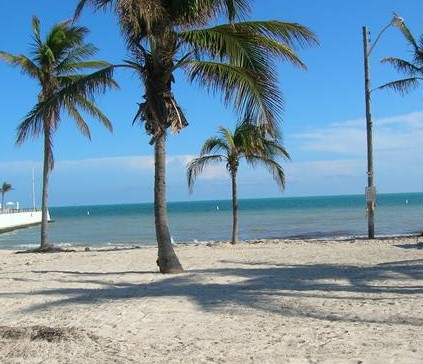
A lot of the sand is quartz that has been washed down from the Appalachians some 25 million years ago. This type of sand lasts a long time. Other types (from shells and sea animals) do not last long.
The whitest sands are nearly 100% quartz. So essentially it is from the mountains, which is strange to me. The Keys sands are generally made from crunched coral, which makes a lot more sense.
A lot of the sands are being washed down the coasts from the upper states before finding their way here in Florida. This takes an enormous timeframe. The sands range from millions of years old to freshly ground. I guess it is a little like wine. I just wish that some of that fine white sand would find its way to the Jetty Pavilion near Port Everglades. That area always gets eroded fast. One strong storm and you notice it immediately.
![]()
--from SlashGear, May 18, 2018
Sunscreens that contain oxybenzone or octinoxate cause mortality in developing coral; increase coral bleaching that indicates extreme stress, even at temperatures below 87.8 degrees Fahrenheit; and cause genetic damage to coral and other marine organisms.” T
Read the entire story at SlashGear.Want your newsletter delivered via snail-mail? Contact the webmaster and request a printed copy. Be sure to put "Active Divers Newsletter" in the subject.
![]()
If so, please email or call us with your current information. You may send an email to: Dr. Dan Baeza, Membership Chair at ActiveDiversInfo@gmail.com. You can also call Dan at 954-260-8225 and leave a message with your new contact information.
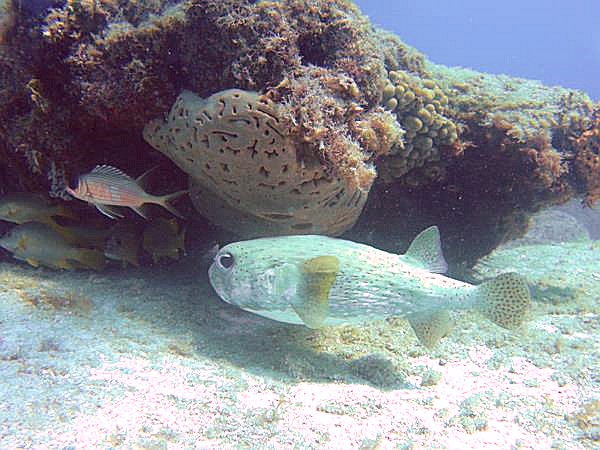
Active Divers T-Shirts For Sale
Show your pride in the best dive club anywhere! Sizes small, medium, large, xlarge, xxlarge. Some tank tops available also. All shirts are $10 each. CALL LON AT 305-251-4975 AND PLACE YOUR ORDER TODAY!. Lon will deliver it to you on your next dive
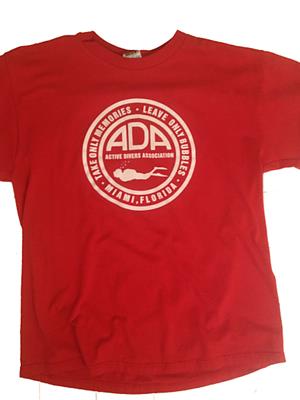
Beer, Drinking Water And Fish: Tiny Plastic Is Everywhere
Plastic trash is littering the land and fouling rivers and oceans. But what we can see is only a small fraction of what's out there.
Since modern plastic was first mass-produced, 8 billion tons have been manufactured. And when it's thrown away, it doesn't just disappear. Much of it crumbles into small pieces.
Scientists call the tiny pieces "microplastics" and define them as objects smaller than 5 millimeters — about the size of one of the letters on a computer keyboard. Researchers started to pay serious attention to microplastics in the environment about 15 years ago. They're in oceans, rivers and lakes. They're also in soil. Recent research in Germany found that fertilizer made from composted household waste contains microplastics.
Read the entire story at NPR.